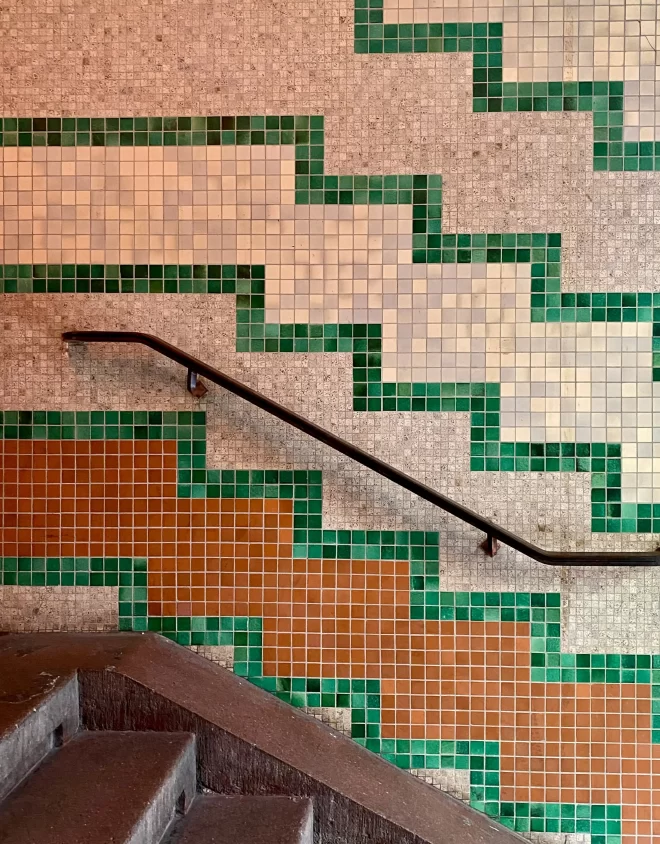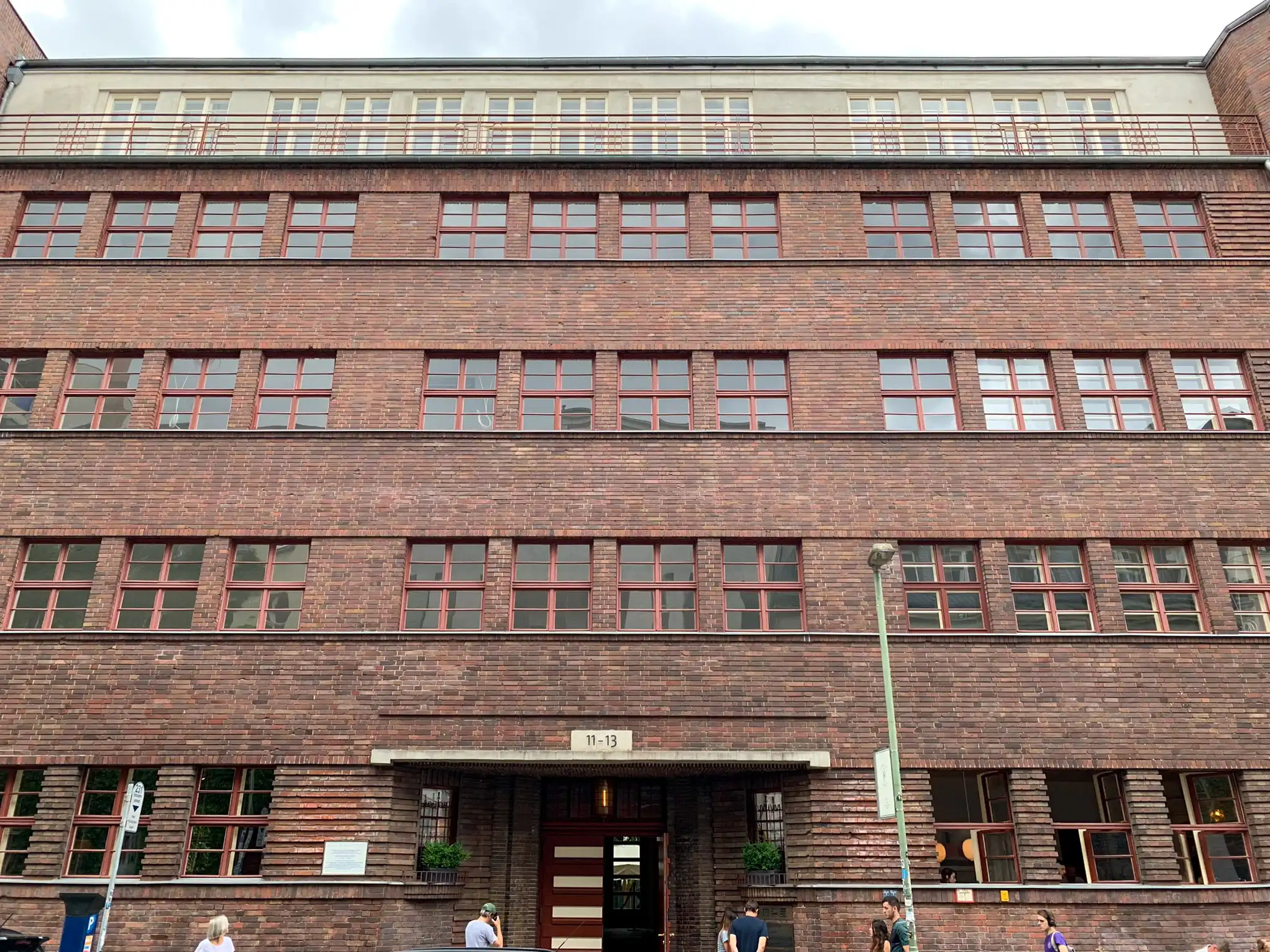
Jüdische Mädchenschule, 1927-1928. Architect: Alexander Beer. Photo: Daniela Christmann
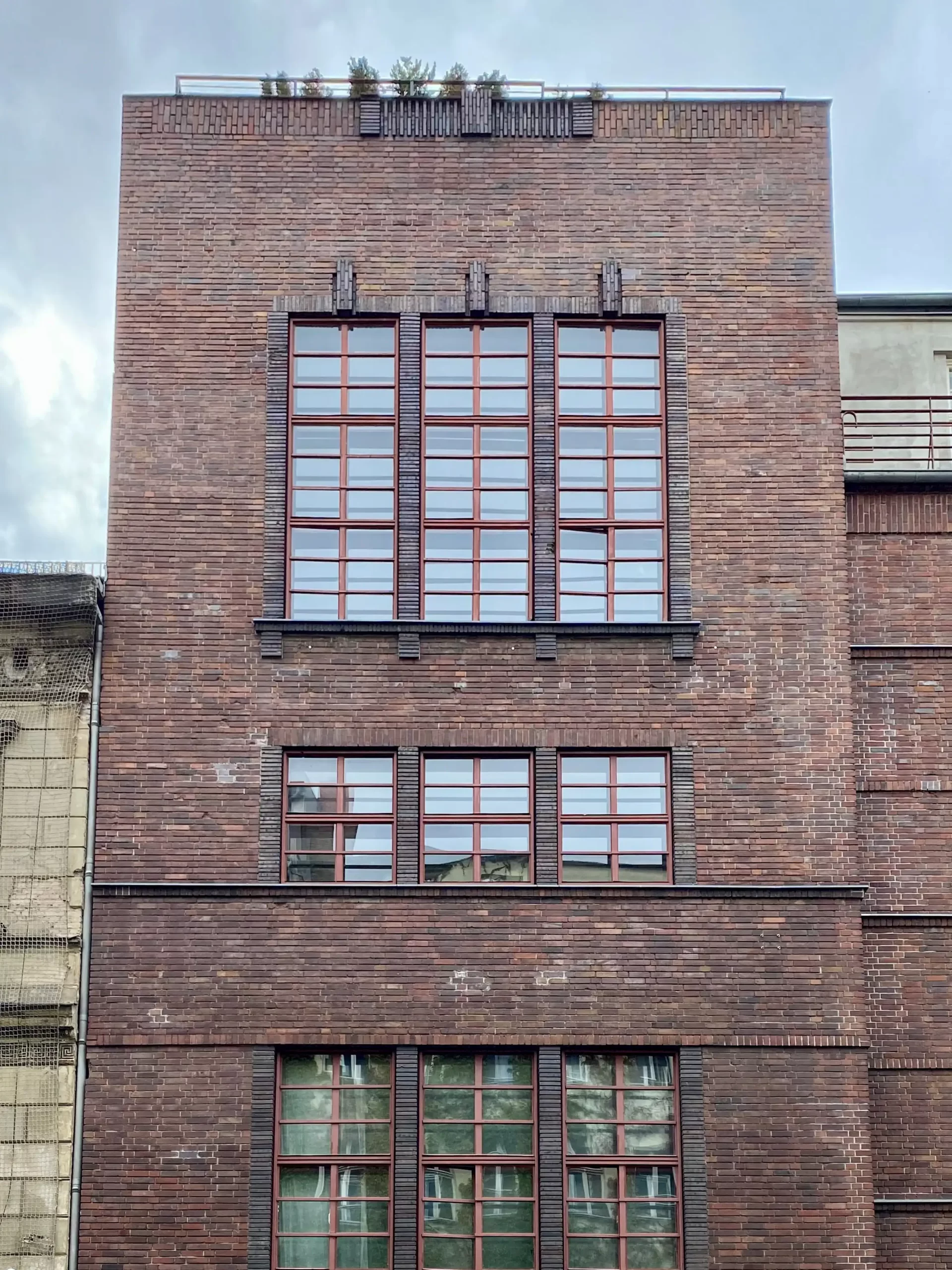
Jüdische Mädchenschule, 1927-1928. Architect: Alexander Beer. Photo: Daniela Christmann
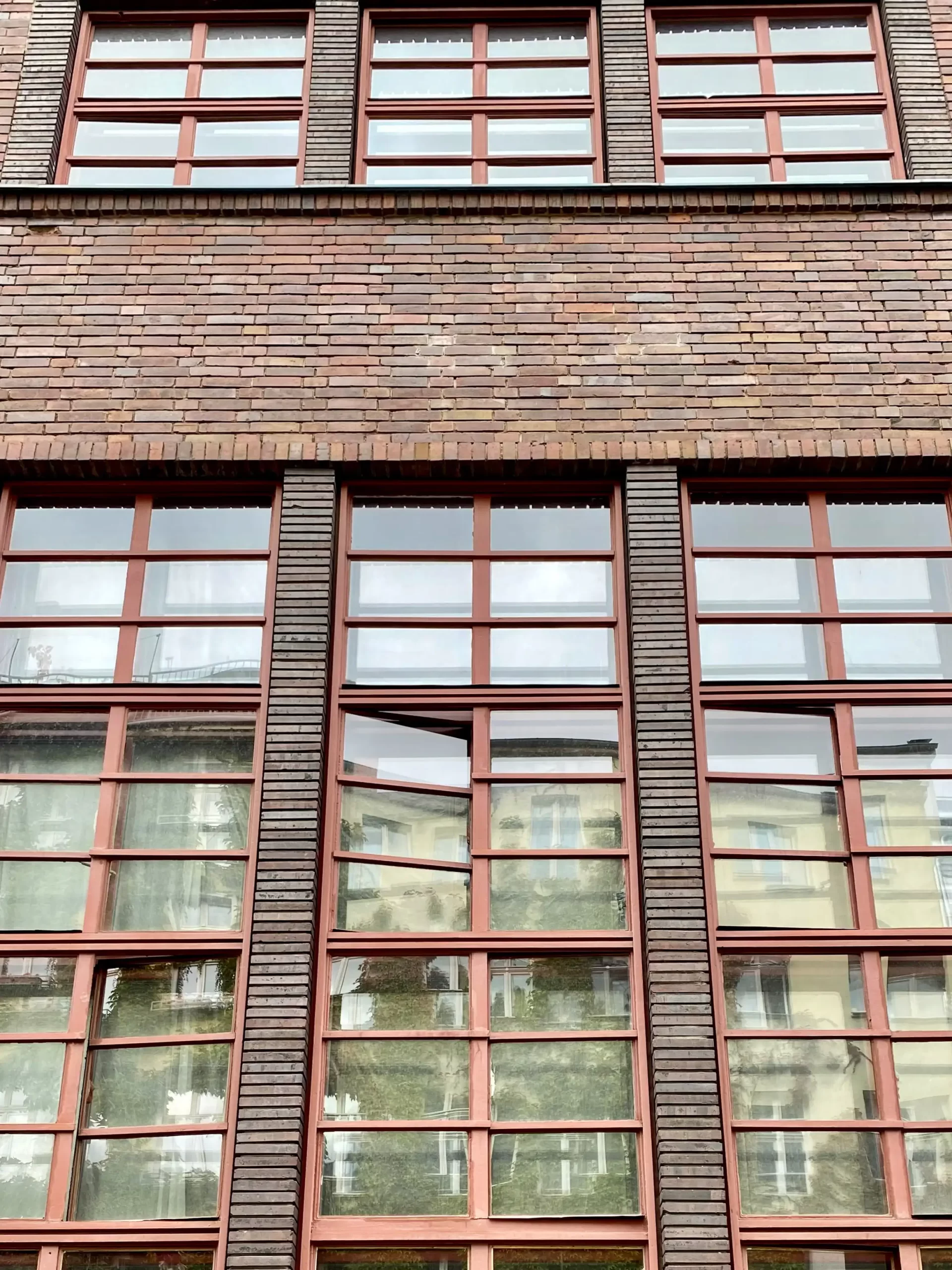
Jüdische Mädchenschule, 1927-1928. Architect: Alexander Beer. Photo: Daniela Christmann
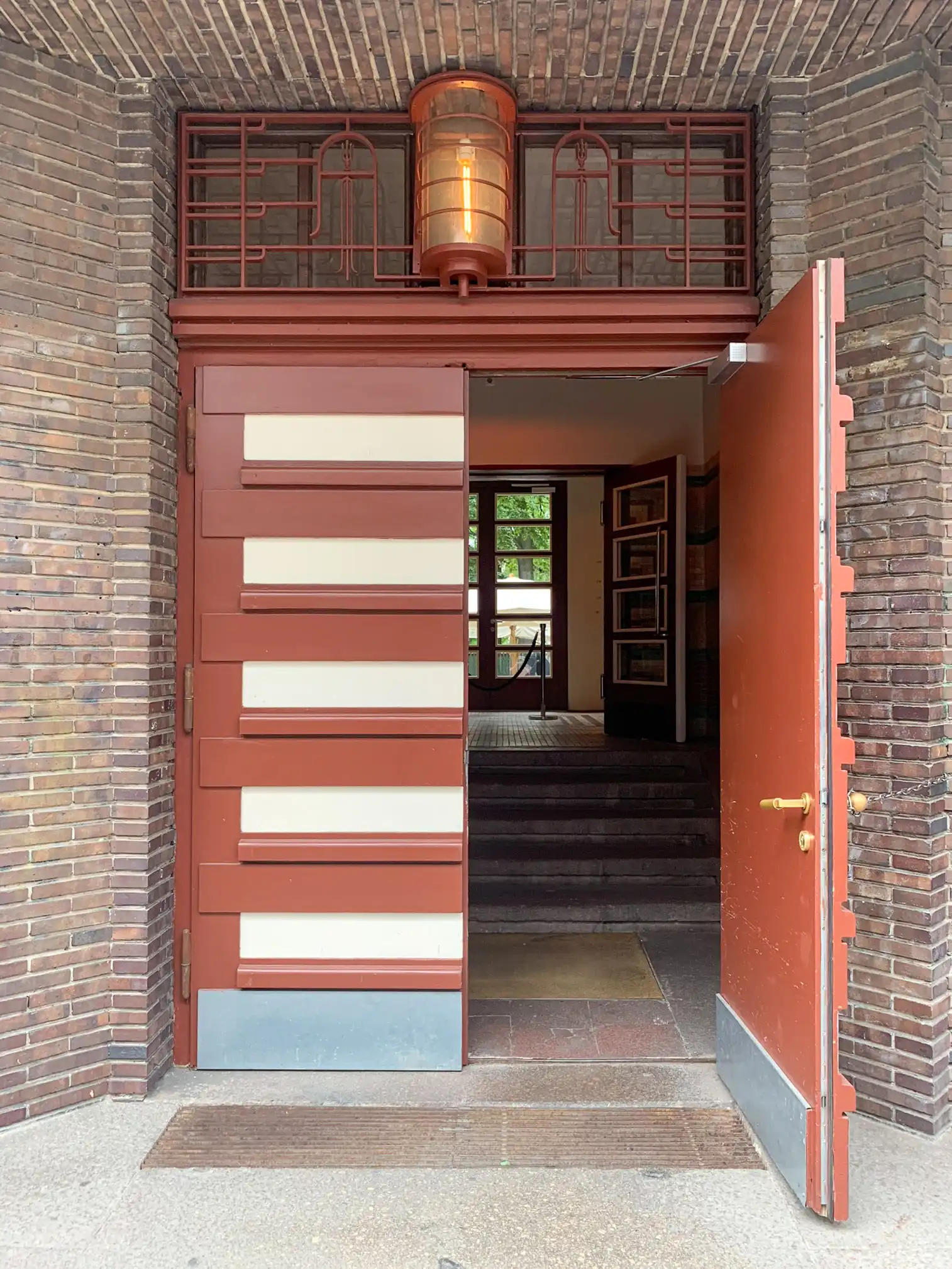
Jüdische Mädchenschule, 1927-1928. Architect: Alexander Beer. Photo: Daniela Christmann
1927 – 1928
Architect: Alexander Beer
Auguststraße 11-13, Berlin, Germany
The former Jewish girls’ school in Auguststraße in Berlin-Mitte was completed between 1927 and 1928 to designs by architect and community builder Alexander Beer.
Alexander Beer
Beer was born in Hammerstein/West Prussia, now Poland, in 1873. He studied architecture at the Technical Universities of Berlin and Darmstadt. Subsequently, he took up a position as government architect in Mainz.
Beer had been a member of the Berlin Architects’ and Engineers’ Association since 1902.
In 1910, he took over the management of the building department of the Jewish community in Berlin.
The Jewish orphanage in Pankow was built to his designs in 1913, with a synagogue with two hundred seats on the second floor.
Between 1913 and 1916, the synagogue in Berlin-Kreuzberg, which was badly damaged during the Progromnacht and whose surviving side wing still serves as a synagogue today, was completed based on his designs.
In 1924, he married Alice Fanny Davidson, daughter of the furniture manufacturer Julius Davidson and his wife Rosa. Five years later, their daughter Beate was born.
The family lived at Blumeshof 15, a street between Lützowstraße and Landwehrkanal that no longer exists today.
The synagogue in Berlin-Wilmersdorf, built between 1928 and 1930 to Beer’s designs, was completely destroyed in 1938.
Following the completion of the girls’ school, a retirement home was opened in the Schmargendorf district in March 1931, which was confiscated by the National Socialists almost ten years later.
Alexander Beer was murdered in the Theresienstadt concentration camp in 1944.
Girls’ School Building
The school building of the girls’ school was one of the last construction projects of the Jewish Community of Berlin before the National Socialist dictatorship.
Construction was carried out by the company F. C. Reinecke and Co.
Next to the Ahawa children’s home at Auguststraße 14-15, the community owned a plot of land that bordered the New Synagogue in Oranienburger Straße to the north.
Here, Beer designed a four-storey cubic school building with a staggered storey on an L-shaped floor plan in the New Objectivity style.
The main wing faces Auguststraße, while the side wing faces the courtyard.
The school building is divided into two sections on the street side: The projecting tower building with large metal windows and the structure with the main entrance, which is offset inwards towards the edge of the block.
Façade
The street and courtyard façades are designed with dark iron clinker bricks, plastered surfaces, painted wooden windows and dark steel windows.
The consistent lines developed from the grid of the brick bond connect the windows, which are grouped in fours, to form horizontal bands.
Floors are connected by a main staircase and a secondary staircase in the side wing.
On the courtyard side, there is a still unrefurbished and vacant individual school building.
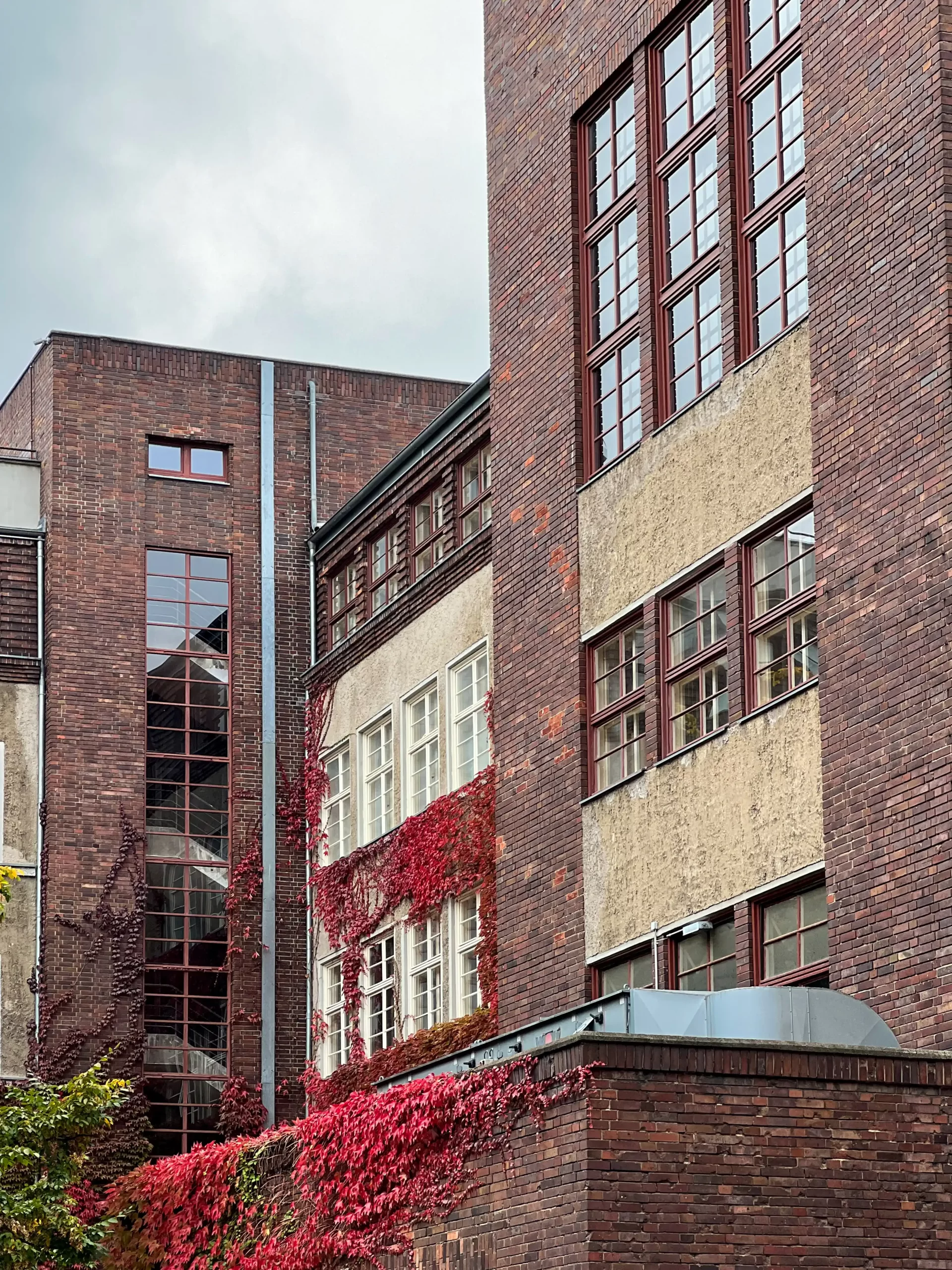
Jüdische Mädchenschule, 1927-1928. Architect: Alexander Beer. Photo: Daniela Christmann
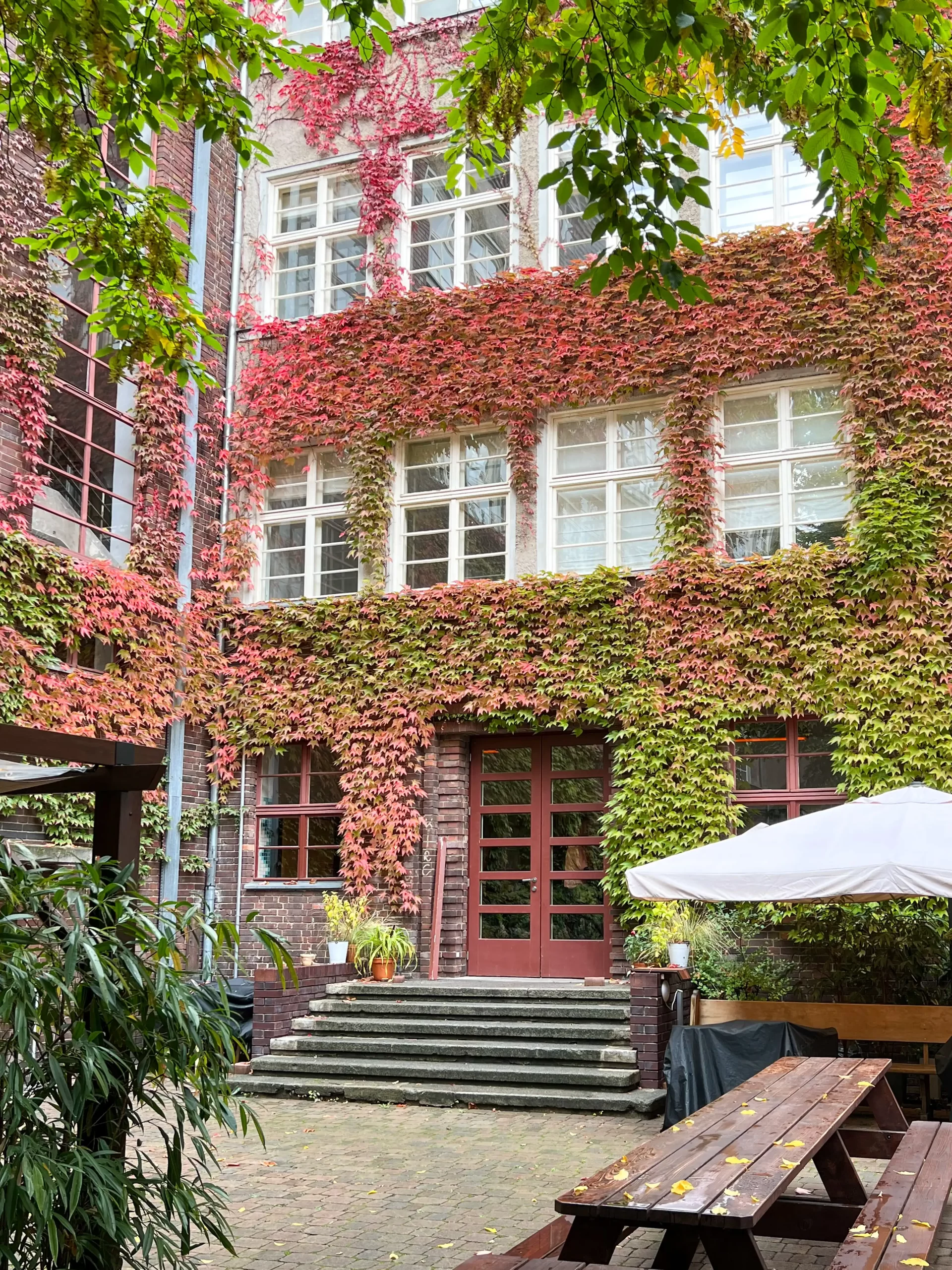
Jüdische Mädchenschule, 1927-1928. Architect: Alexander Beer. Photo: Daniela Christmann
Facilities
With a floor space of 3000 square meters, the school had room for around three hundred pupils.
The first floor housed a gymnasium as well as the principal’s and teachers’ rooms. On the upper floors were 14 classrooms, a large drawing room as well as handicraft and physics rooms.
A roof garden was used as a recreation area during breaks.
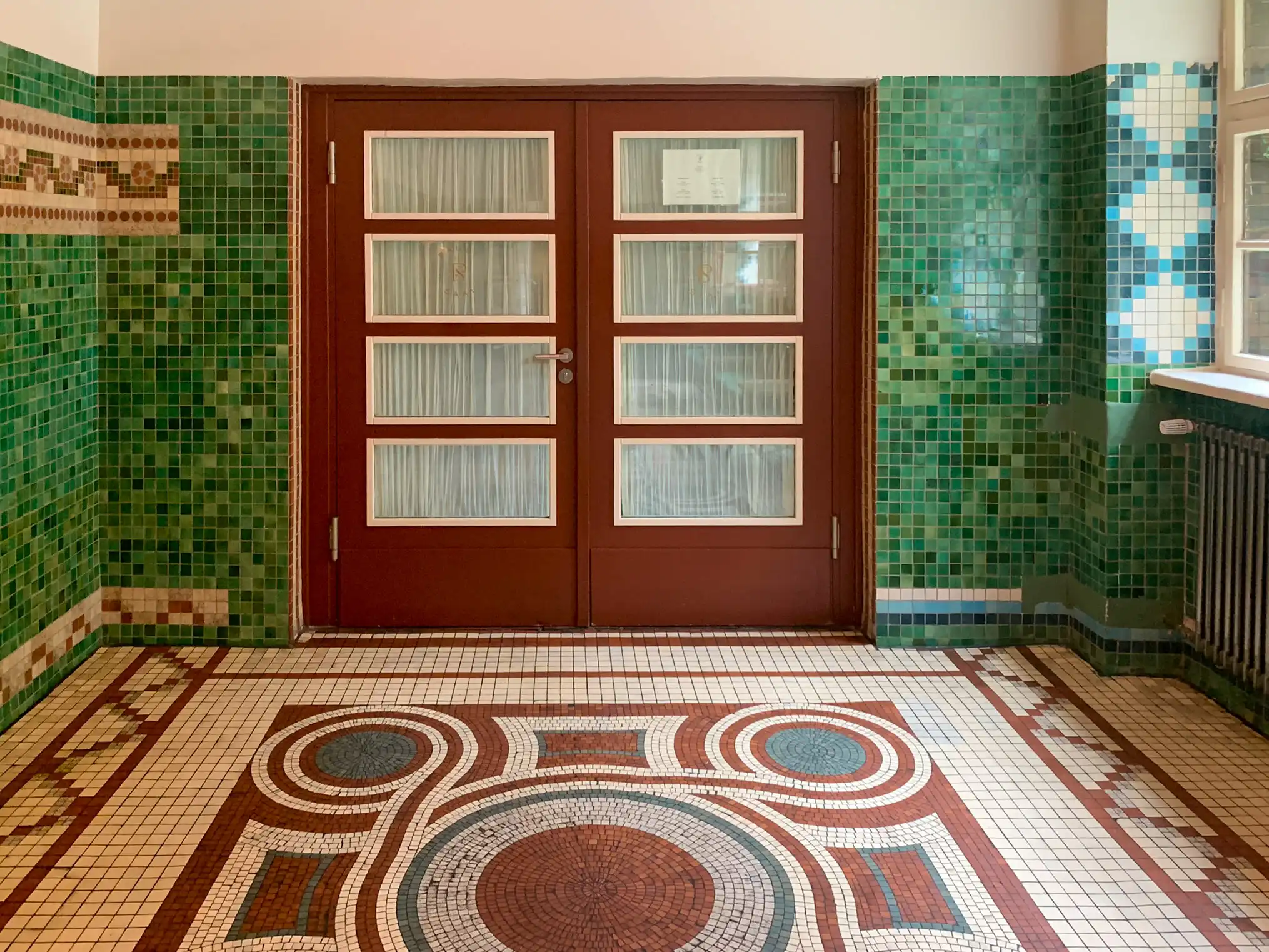
Jüdische Mädchenschule, 1927-1928. Architect: Alexander Beer. Photo: Daniela Christmann
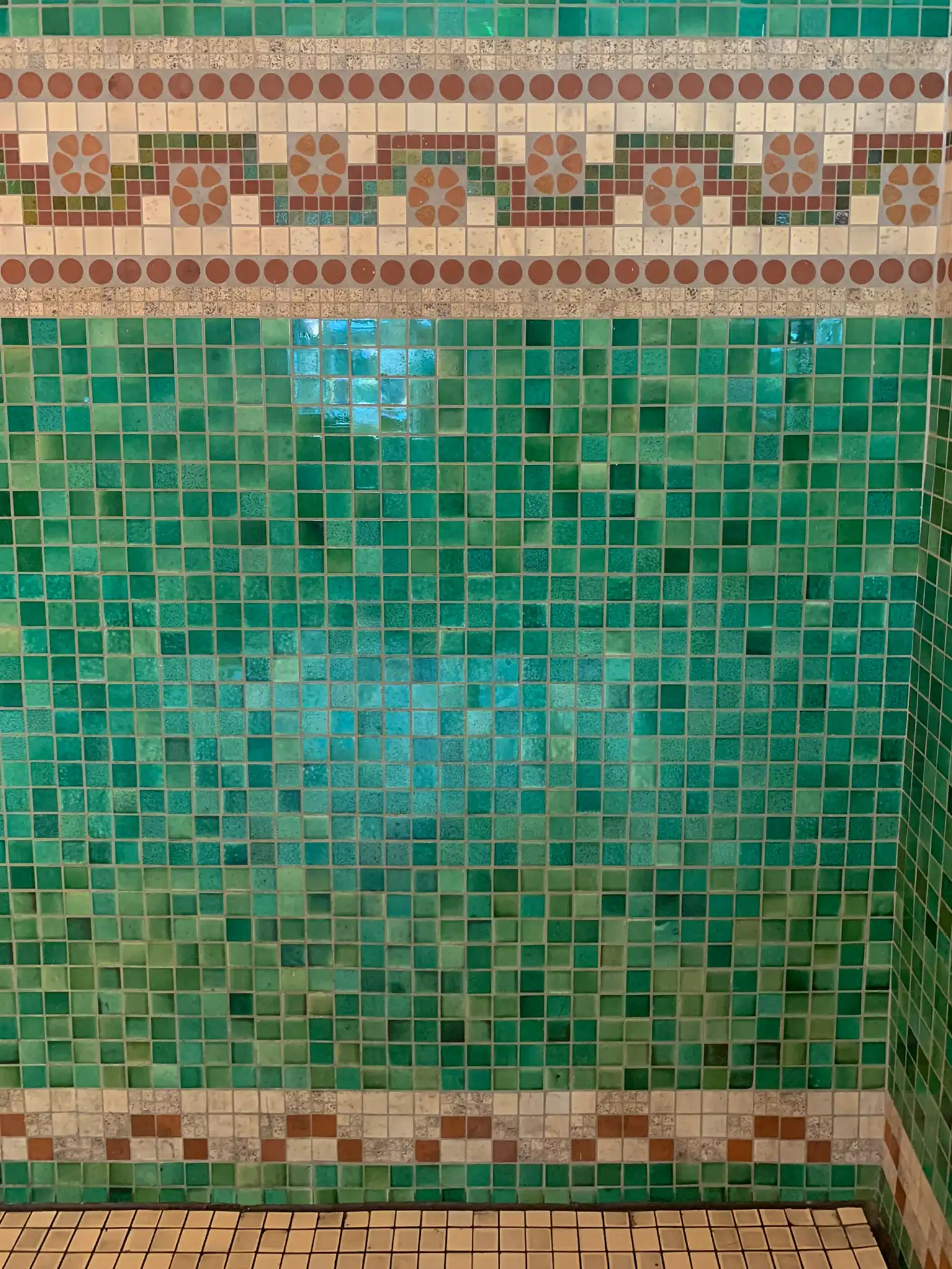
Jüdische Mädchenschule, 1927-1928. Architect: Alexander Beer. Photo: Daniela Christmann
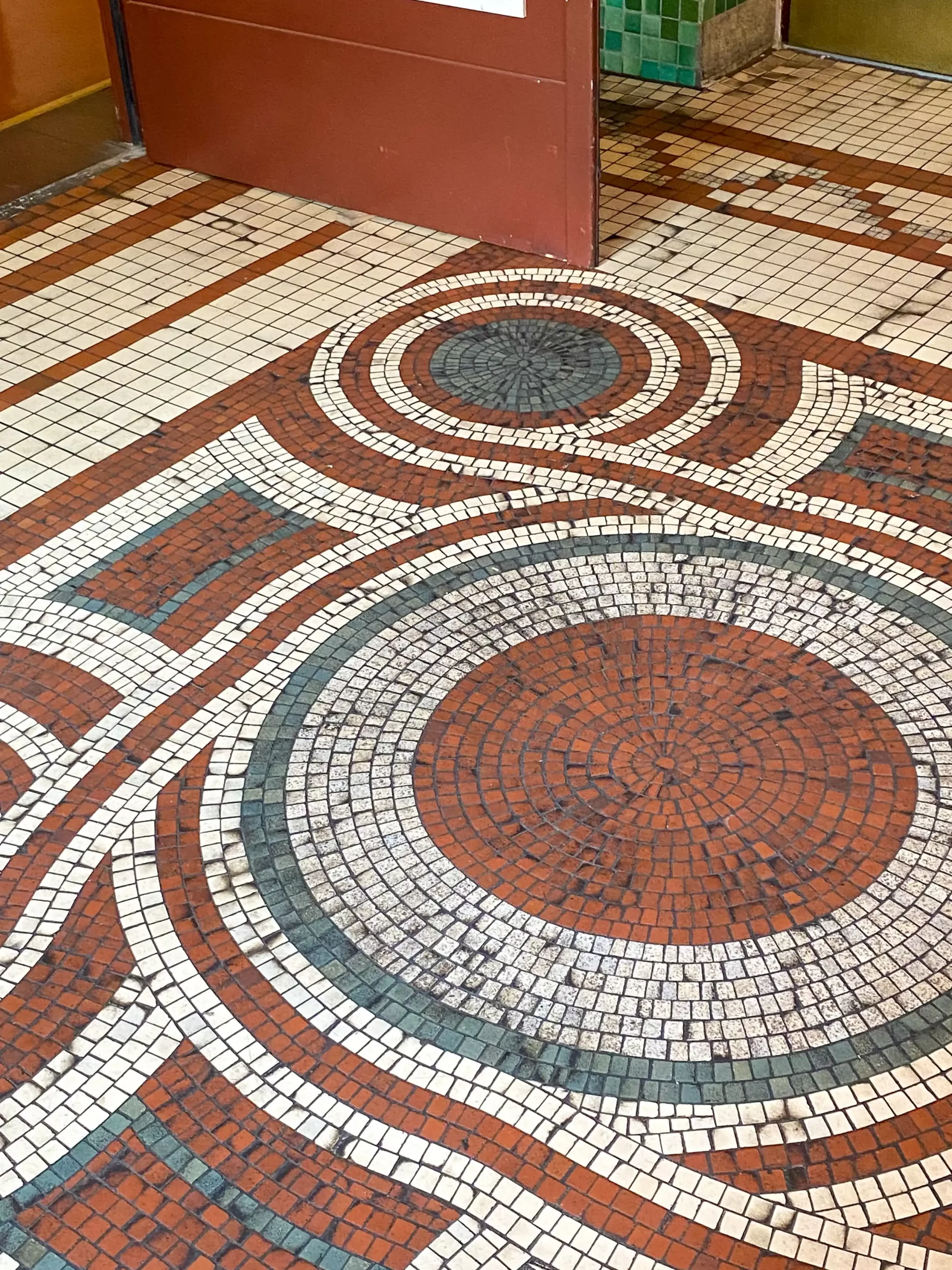
Jüdische Mädchenschule, 1927-1928. Architect: Alexander Beer. Photo: Daniela Christmann
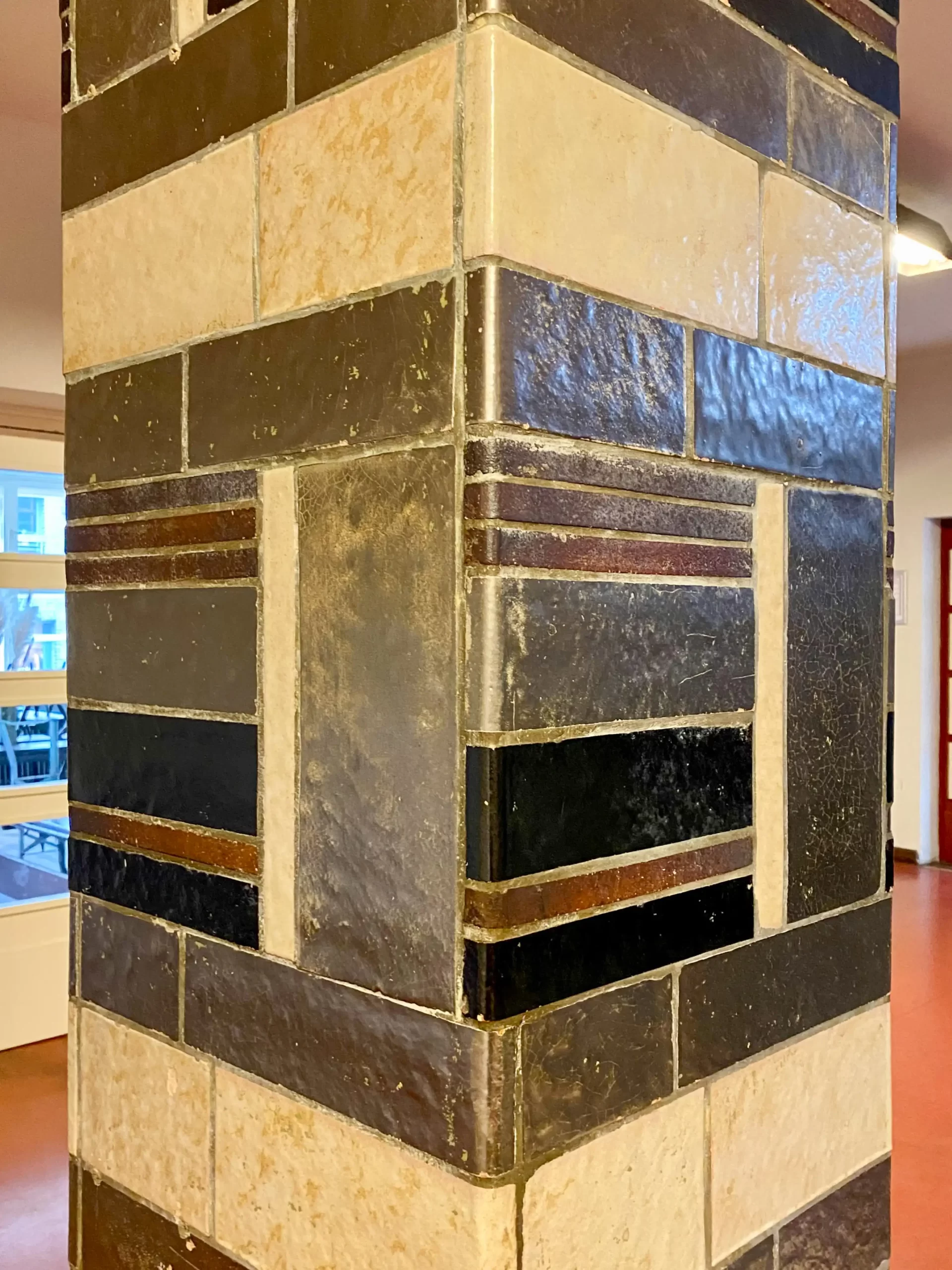
Jüdische Mädchenschule, 1927-1928. Architect: Alexander Beer. Photo: Daniela Christmann
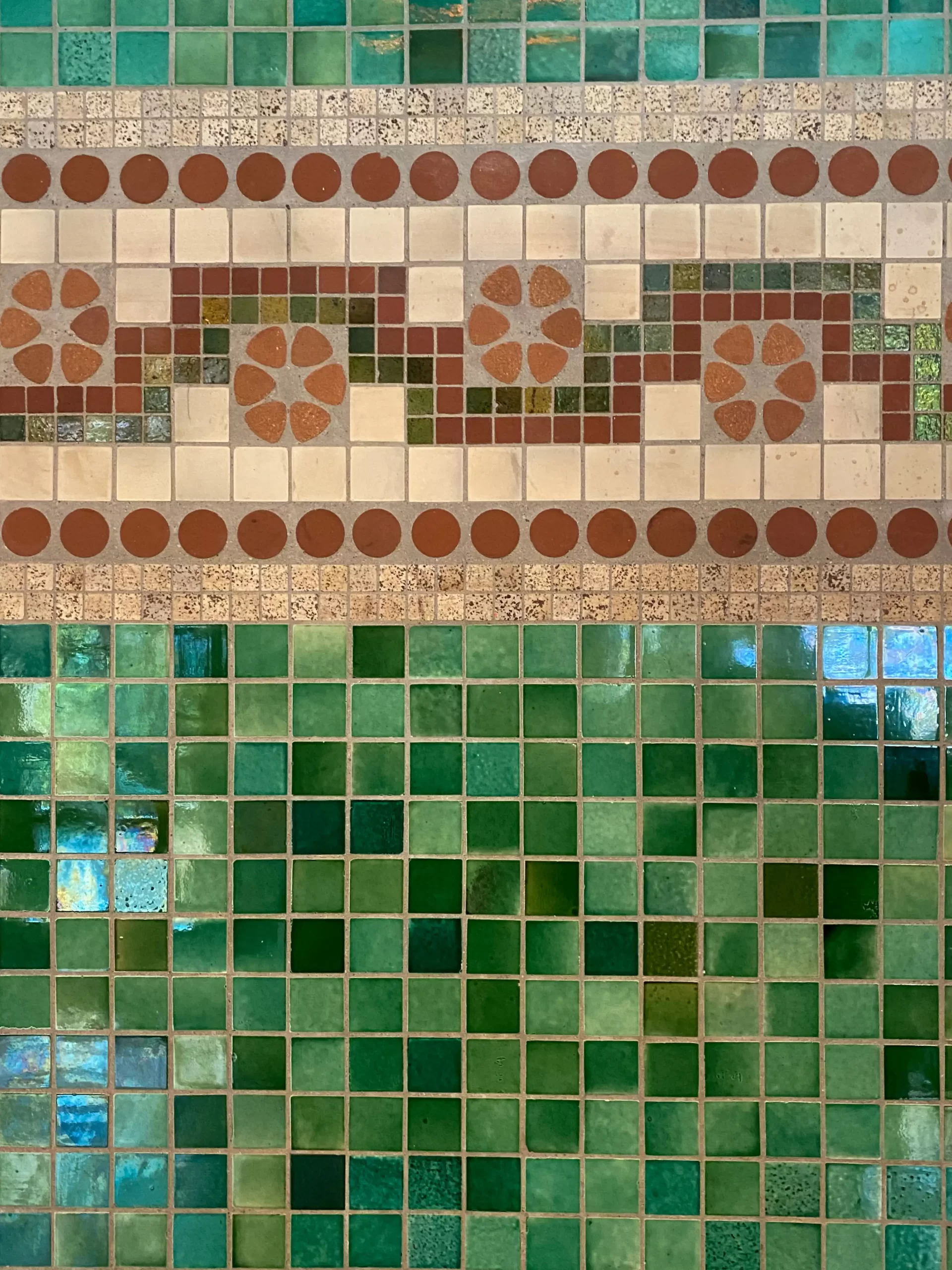
Jüdische Mädchenschule, 1927-1928. Architect: Alexander Beer. Photo: Daniela Christmann
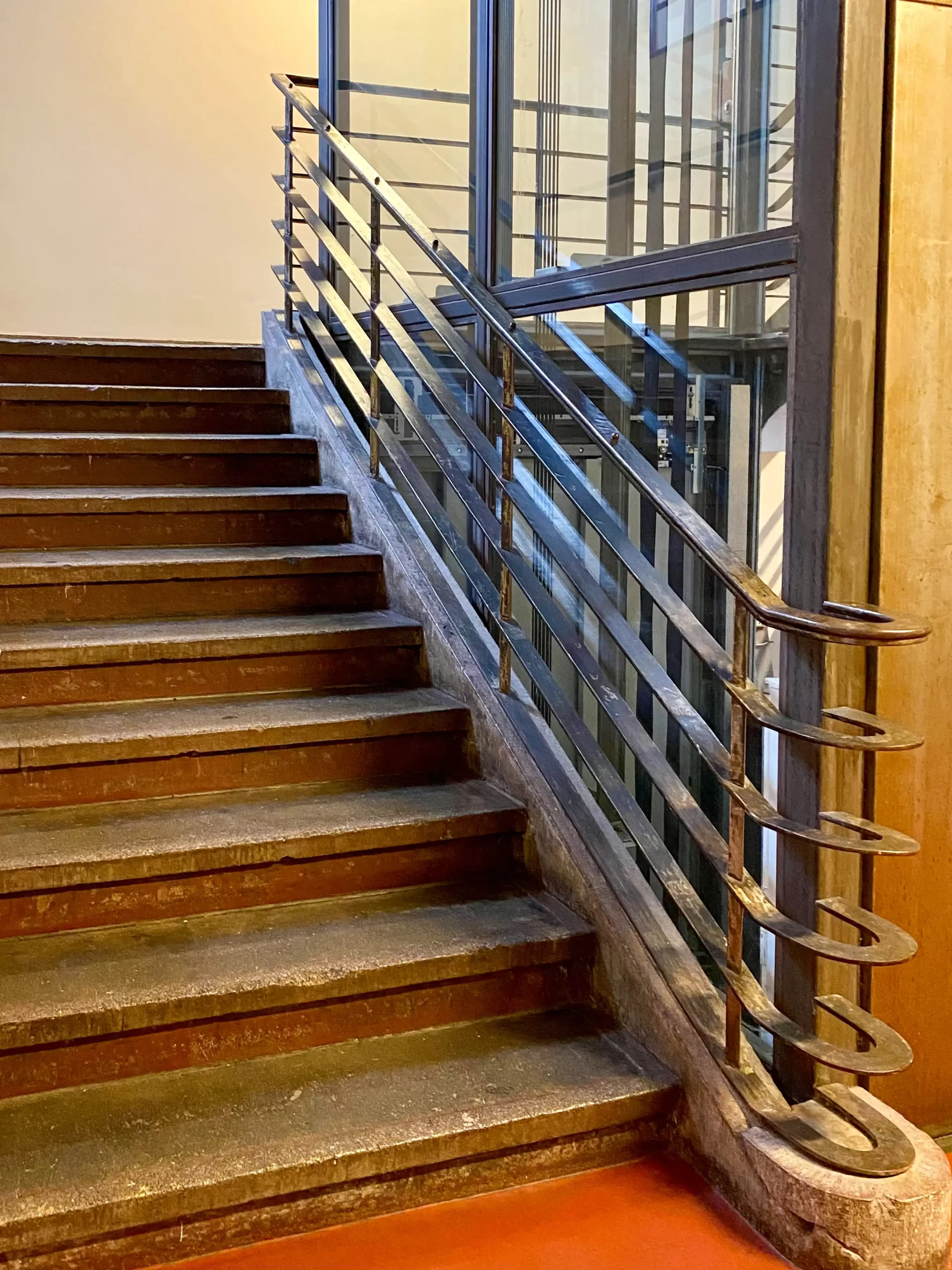
Jüdische Mädchenschule, 1927-1928. Architect: Alexander Beer. Photo: Daniela Christmann
Fate of the school during National Socialism and after the Second World War
In January 1933, there were around 160,000 Jews living in Berlin. In April 1933, the “Law against the Overcrowding of German Schools and Universities” came into force. From October 1938, there were more and more restrictions on the lives of Jewish citizens.
As part of the National Socialist plan to exterminate the Jews in Europe, the girls’ school was finally closed on June 30, 1942. Most of the pupils and teachers were deported or murdered in death camps.
From then on, the school building served as a military hospital.
After the end of the war and the resulting division of Germany, the school was located in the Soviet sector. During the period of the German Democratic Republic, the building housed the “Bertolt Brecht” polytechnic secondary school.
Due to a lack of pupils, the school was closed in 1996 and the building stood empty for years.
In 2009, the Jewish Claims Committee (JCC) transferred the building to the Jewish community of Berlin. JCC is an association of Jewish organizations in New York that has been representing compensation claims of Jewish Nazi victims since 1951.
Refurbishment
Gallery owner Michael Fuchs rented the building for 30 years in 2011 and invested around five million euros in its refurbishment in keeping with its listed status.
Today, the building houses the Salon Berlin of the Frieder Burda Museum, the Michael Fuchs Gallery and a restaurant.
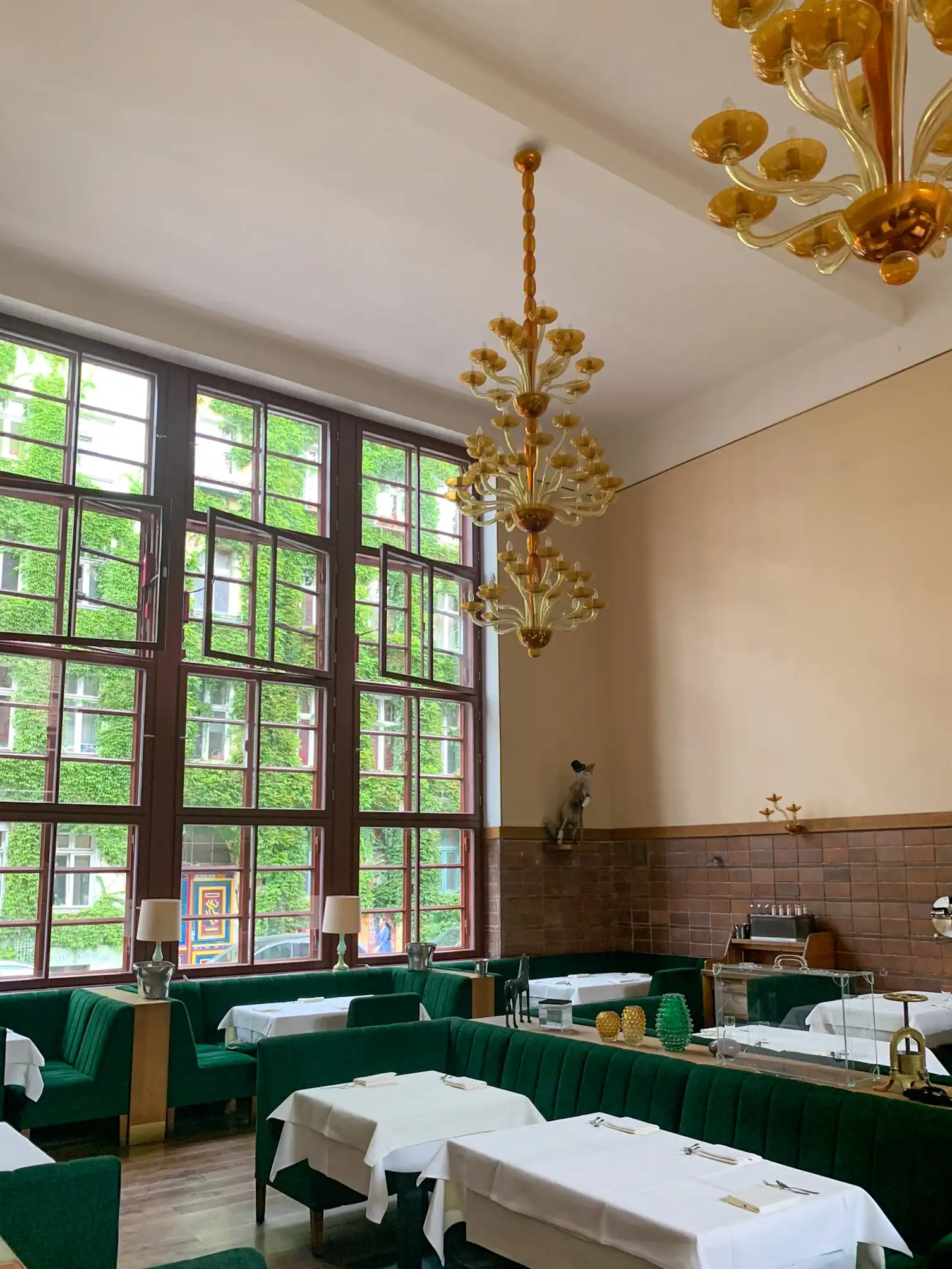
Jüdische Mädchenschule, 1927-1928. Architect: Alexander Beer. Photo: Daniela Christmann
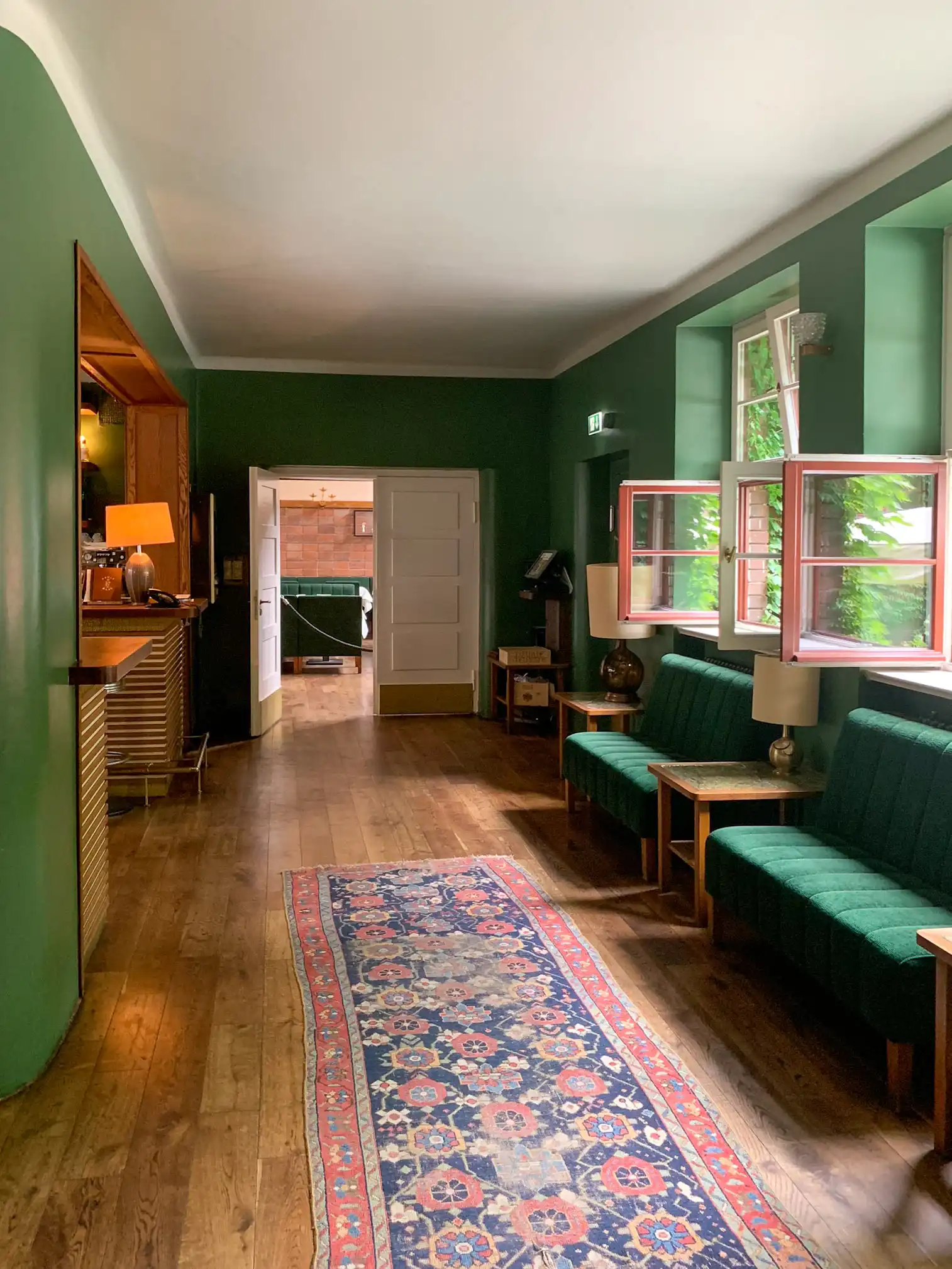
Jüdische Mädchenschule, 1927-1928. Architect: Alexander Beer. Photo: Daniela Christmann

